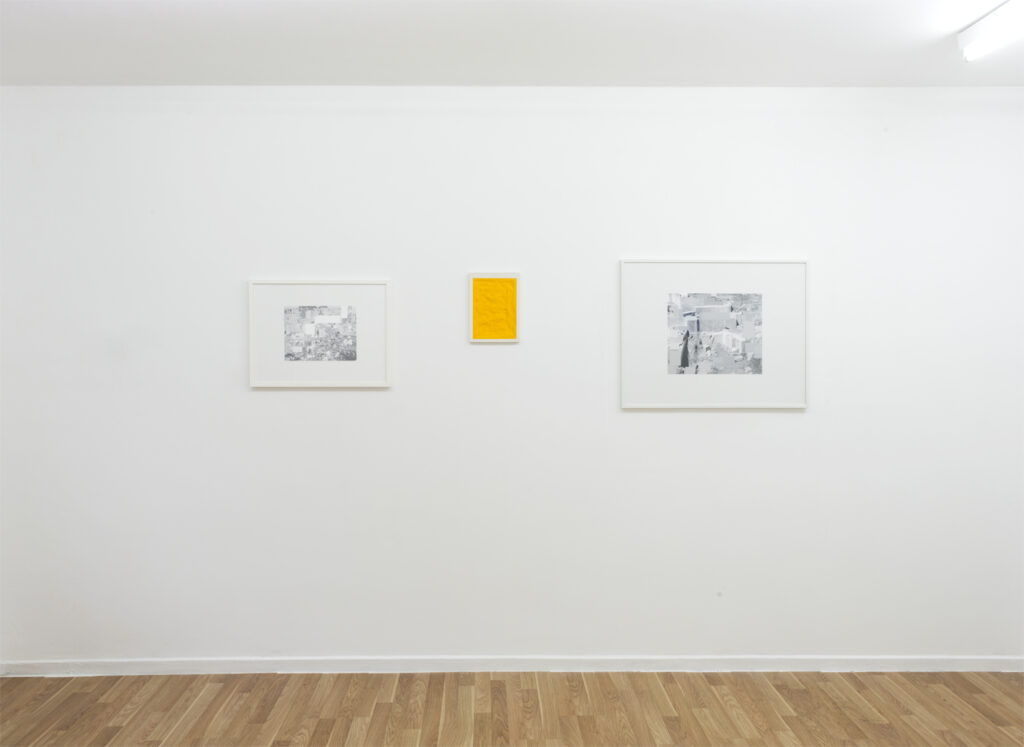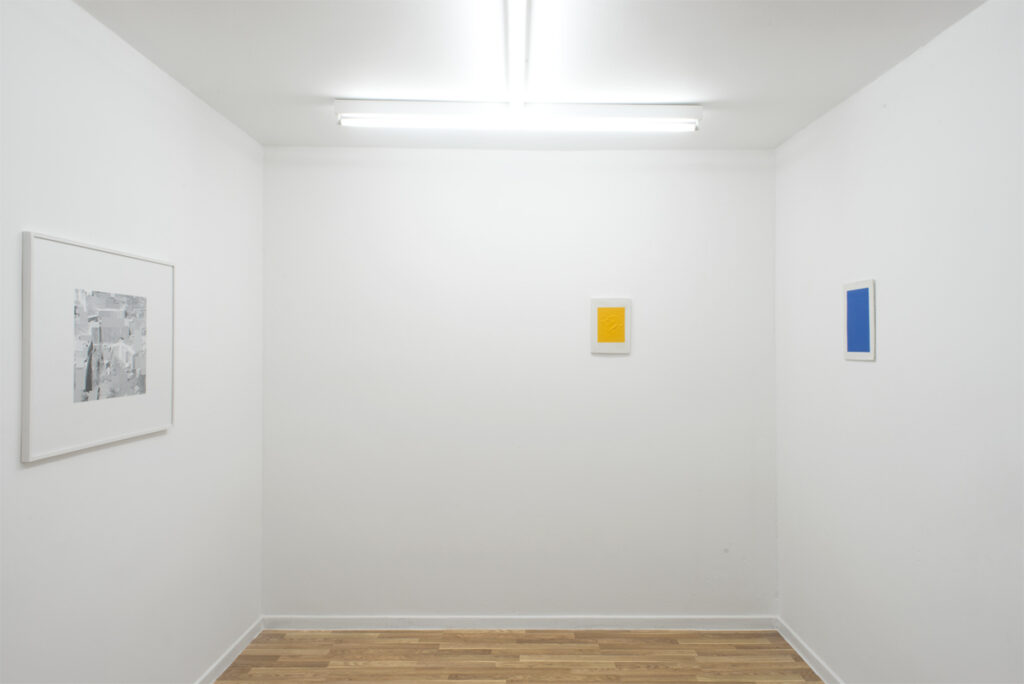Perceiving the world differently is one of the advantages
of being a thinking organism. We see, taste, touch, and more. We try to work with this set of experienced data to slowly gain an illusion of what our world might be. But all of that knowledge is bound to our point of view. Klaus Kleine’s title “elephant in the dark” refers to an Indian fable about blind monks, stepping into a room with an elephant. They are only being able to touch one particular feature of the gentle creature and thus diverge conclusions on what the animal may look like. When we only see a certain, narrowed down truth, it might not be wrong, but jumping to conclusions could prove dangerous, after all there are always different options. The story concludes by presenting the impossibility to perceive a certain matter at once and on your own. This concept can be applied to Klaus Kleine’s pieces. You seem to see, though maybe you do not, maybe you need to step back, or get even closer for a bigger picture, yet you fail to fully grasp what lies in front of you. Taking the German translation for sculptor (Bildhauer = image crafter) to its literal meaning somewhat defines Kleine’s process – he creates spatial images that often evolve around different issues of visualisation.
His images take concrete physical form, as accessible installations or filigree sculptures that directly engage the exhibition space. Operating within a constant mode of reduction he is able to pinpoint the concept creating a dense multitude of visual interferences within the space and the object. His works therefor do not try to deceive the eye, but to allow a multi-layered perspective, denying an all too predefined definition.
On the roof of MÉLANGE´s new venue, facade is placed. A sculptural installation comprised of 10 metal frames, resembling an abstract architectural decoration. This work has been installed in various configurations and each presentation is a unique of its own, never appearing in the same mode twice.The artist reacts with this piece to the given space to emphasise certain aspects of its surroundings. Here, façade seems to be yet under construction, waiting to be finished. But a closer look tells you, that all parts are in complete balance.
On the inside, two new series of work are presented. Their plain character is contrasted by its manual interaction, both creating a certain of flatness or depth by adding or removing color. In the black-and-white photos (cava) of marble quarries Kleine deleted all signs of human interaction within the jagged and geometrical landscape. He overlaps them with monochrome rectangular shapes, randomly taking the color from any spot of the photo itself.
For the ceramic casting compounds Kleine uses a clay ground in which he draws organic forms with this fingers. After the drying process a monochrome color field, whose size is prescribed by the clay ground, is applied on top of the surface. Inevitably one is reminded of the tradition of Concrete Art and its divisive successions, yet Kleine defines his works as sculptures. Sharing this resemblance Kleine’s notion becomes clear to loosen the separation between sculpture and painting and thus appealing to a visual and tactile experience.
Klaus Kleine Elephant in the Dark
Mélange 26/01/2017—28/02/2017

Klaus Kleine: facade 1, 2016, variable dimensions, installation view, MÉLANGE 2017

Klaus Kleine: facade 1, 2016, variable dimensions, installation view, MÉLANGE 2017

Klaus Kleine: cava 1, 2017, archival inkjet print, 34 x 40 cm (unframed), MÉLANGE 2017

Klaus Kleine: RF 3, 2017, acrylic paint, ceramic, 29 x 21,5 cm, unique piece, MÉLANGE 2017

Klaus Kleine, installation view, MÉLANGE 2017

Klaus Kleine: O.T., 2016, acrylic paint, ceramic, 29 x 21,5 cm, unique piece, MÉLANGE 2017

Klaus Kleine: O.T., 2016, acrylic paint, ceramic, 29 x 21,5 cm, unique piece, MÉLANGE 2017

Klaus Kleine, installation view, MÉLANGE 2017

Klaus Kleine: RF 2, 2017, acrylic paint, ceramic, 29 x 21,5 cm, unique piece, MÉLANGE 2017

Klaus Kleine: RF 2, 2017, acrylic paint, ceramic, 29 x 21,5 cm, unique piece, MÉLANGE 2017


Klaus Kleine, installation view, MÉLANGE 2017


Klaus Kleine: RF 2, 2017, acrylic paint, ceramic, 29 x 21,5 cm, unique piece, MÉLANGE 2017